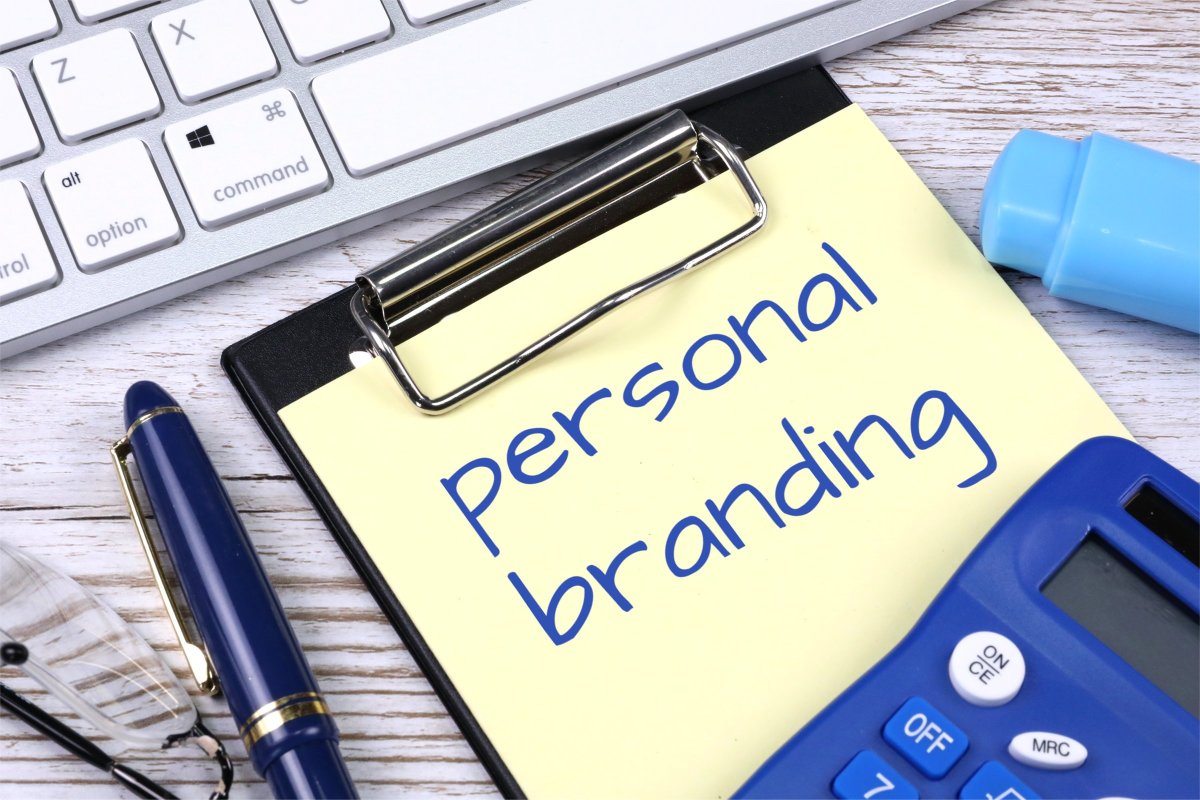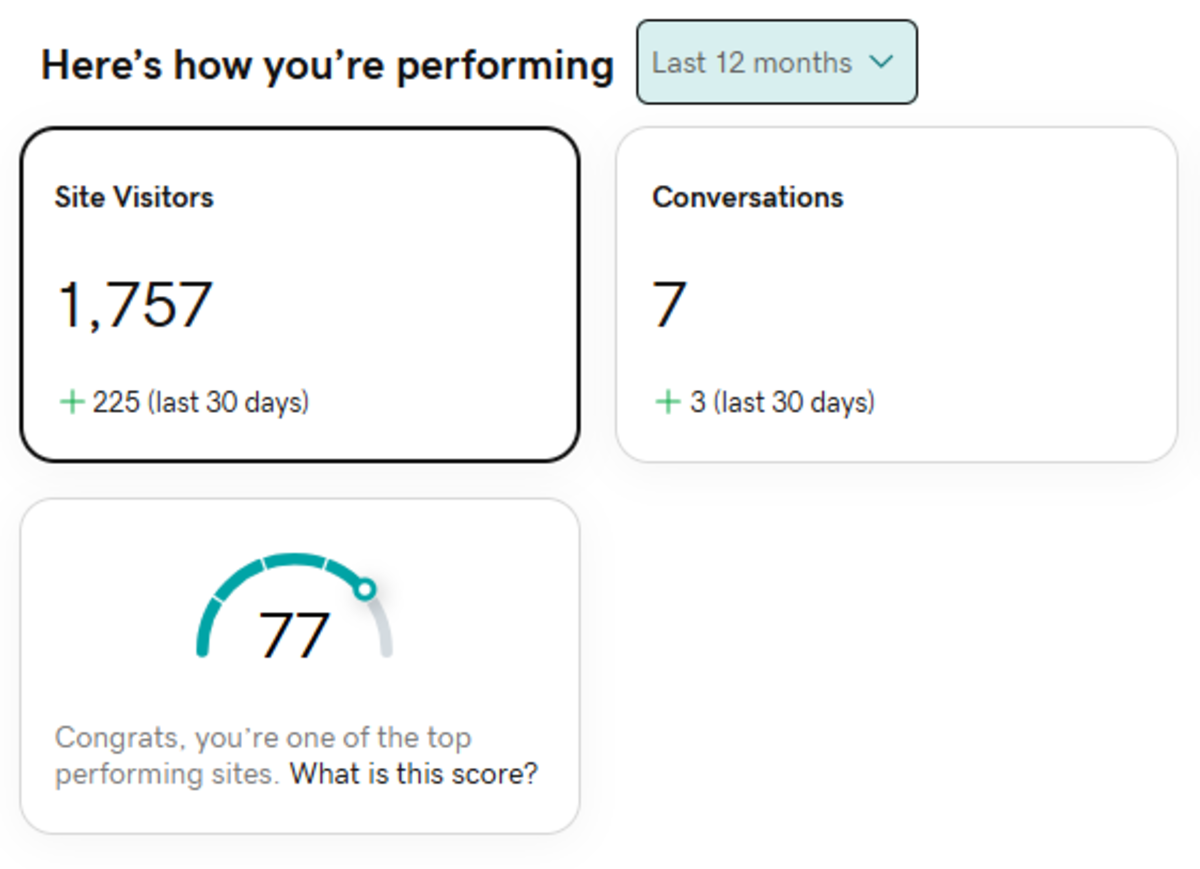10 Common Mistakes To Avoid On Your Job CV
Polish and fix up your job resume
Mistakes can happen in life, and they can creep into CVs or job resumes too. It can be a simple thing to make mistakes. But it can be embarrassing to be told that a mistake has cropped up in your CV or Resume - by a prospective Employer, as you must then explain to them, and after, repair the damage. Most issues come up either during or after the interview has happened. It is when a business is interested in hiring you for the job, but they need to verify your work history and qualifications. That is when mistakes appear in the apparently shining resume that you spent ages perfecting. Below are listed the best power words to include in your resume... but first, what are the most common mistakes in a CV?
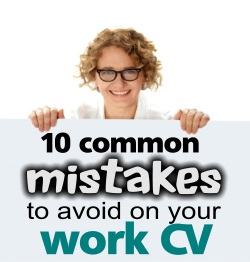
10 Mistakes to Avoid on Your Resume
1. Poor spelling and grammar – don’t always trust the spellchecker in the pc. We get wrapped up so much in writing up a CV, we sometimes miss the errors, because we are so close to the problem, and that can trip us up. Get someone to read right through the CV to make sure spelling is okay. They will spot if anything is amiss. Ask a college friend. Get the spelling and the grammar right. And check your cover letter too.
2. You wrote a lot, but a lot of drivel – did you waffle on about trivia or minor things? Writing lots, but saying little? A future boss is constantly looking for the relevance to your skills and abilities. He is always asking himself "how can this candidate fit into my company, and what can he or she do?"
Your future employer does not want you to explain every single thing you ever did in your life. Simply focus on the most important details, the key elements that can show your talents, and make you the most relevant candidate. Give just the facts, and make those facts aim like arrows towards that target - your future job. Don’t waffle.
3. You didn’t tailor your CV – every employer is searching for a CV (and cover letter) that applies to their respective position, and all positions are different. You should make small adaptations so that your CV will match their specific requirements. Resist that temptation to lie in your CV. There is nothing wrong with re-purposing your CV or resume to fit the specific work you are applying for. Simply make those most relevant skills to that position the most important skill set on your CV so they appear first.
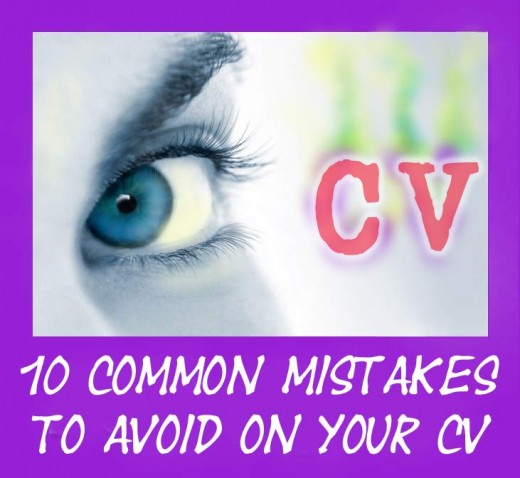
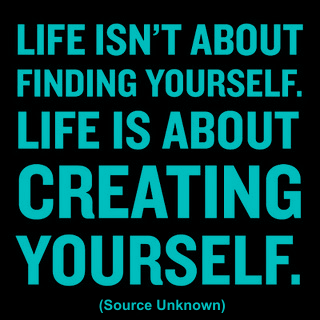
4. You highlighted duties instead of achievements – okay, you are allowed to mention duties if you want – but not at the expense of your achievements. Too many candidates just copy and paste their responsibilities from what are probably those old job descriptions. Instead, try to find ways to show what you actually achieved while you were in those posts.
5. You broke the 2-page rule – in fact 2 pages of A4 for your CV is enough room to sell yourself and persuade your potential employer that you are worth bringing in for an interview. No more than 2 pages. Sometimes less can be more. Admittedly, some employers now see it as being not that big a deal if your CV is three pages. But some companies are old fashioned. And some companies have many resumes to read through. Make it your mission to shorten and abbreviate your curriculum vitae to 2 pages.
6. You left out information – not a good thing. There should not be any unexplainable career gaps or omissions in your work history. No work history should have holes in it. That’s like a Big Red Flag to a bull. Every interviewer or HR Boss is trained to look for gaps in your employment anyway. Every interviewer will ask that embarrassing question, and don't lend hostage to fortune by risking this. You are applying for a real job position. Don’t leave it to a prospective boss to guess at what you have been up to, as they will always assume the worst.
This is a common issue in CVs. Be truthful. If your history has holes, be able to explain them, and the "Why" question. Medical reasons, accidents, personal or unusual circumstances.
A good friend of mine applied for a job in the spring of 2014, with a gaping gap in her history. It turned out she had a breakdown and didn't know how to tell this in an interview. In the end she just risked it all, and told them, and prepared for the worst. They hired her. She had the qualifications, and the boss said he liked admired her honesty and integrity. It was not easy for her, and she really did not want to ruin her chance of getting the job.
7. You used a (cheesy) cliché – yes, it can happen to the best of us. So avoid using terms and phrases like “Good Communicator” or “I worked in a team”. Hands up, how many of you people have that written in your CV? How many stale and over-used words are lurking on that resume? Quite a few perhaps. Avoid cheesy words and instead have a look at my chart for 100 excellent resume words below. Go and fix that little issue right now. Take action.
8. You were somehow “vague” – you may not have explained or elaborated on something clearly enough, or you did not give enough specific information. Give enough details and information that focuses on their company’s needs as well as your own. Put yourself in their shoes. You did something during some period and it could make all the difference - but you just didn't think it was important enough to elaborate on! DON'T UNDERSELL YOURSELF. It could be the difference between getting the position or not getting it. They simply need to know the facts. Don't be vague!
9. Your CV was poorly designed or thought out – your content did not get priority because it was not done correctly? Are your talents being shown and appropriately portrayed? The rule of designing and laying out your CV is this – “layout is important, but of secondary importance when compared to content in a CV”. So unless it’s an artistic vacancy, or design job specifically, keep it simple and worry about content. You don't want to end up with a resume that looks amazing but with almost no meaningful content. A resume is an opportunity to sell yourself! So make that content mean something.
Note that some HR bosses are looking at CVs and resumes on their Mobile devices now, and so it should read well even on an iPhone or tablet PC. That's the way the world has gone!
Incredible example - a friend of mine applied for a job in a broadcasting radio station as a presenter, and on my advice, she included a link on her resume to a Soundcloud account where she had a recording of her voice doing a reading. It sounded awesome (especially on a PC and iPad) and her interviewers offered her the job on the spot, but no one else had thought of that. Her content stood out from the crowd.
10. Your personal details were incorrect – oh dear. Not getting any emails, or phone calls, or letters? Or ANYTHING? Maybe the reply to the job went to someone else! Keep your address details in a permanent place. Update your address if you are moving location, which CAN happen. Mobile phones are a particular detail that can change. So can email addresses. Was your email address an old “work” address? Fix it.
Oh and one more thing. Don't mention you have a Facebook page unless you want them to trawl through it. Technically your Facebook account is not job related and should be out of bounds, in other words private. LinkedIn however is perfect for putting your resume online, or put it on a blog, like WordPress or Weebly.
Resume Sample
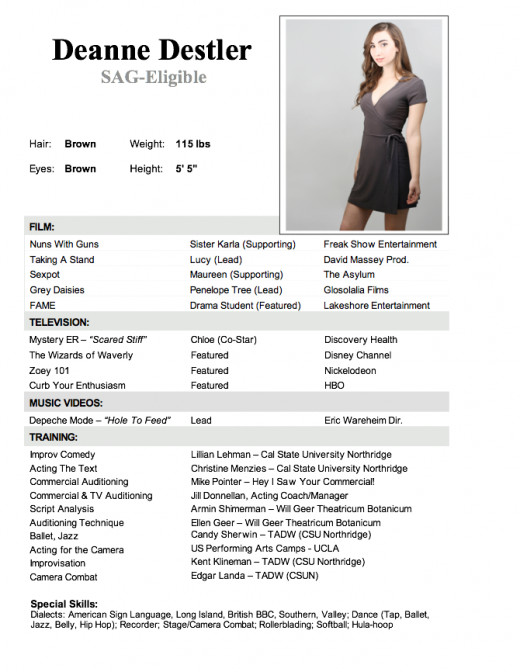
100 Excellent Resume Words
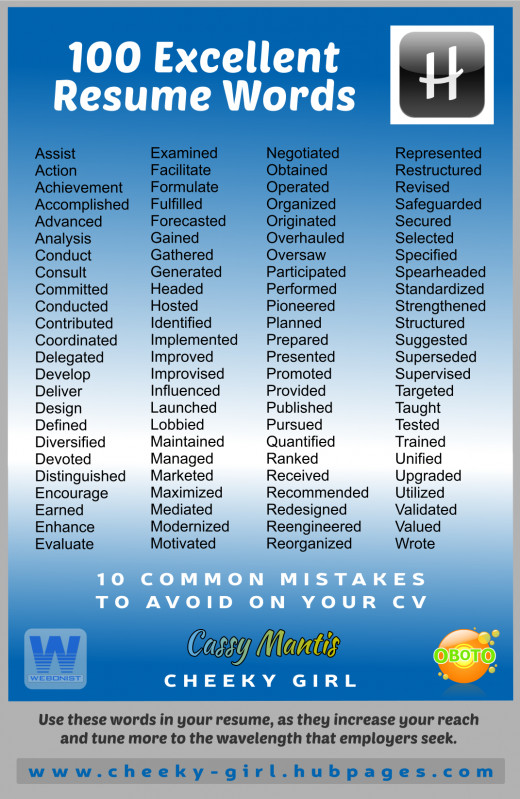
More Tips On Finding Jobs?
Do you want to see more tips for job searching and finding work?
Note on Electronic Job Submissions - PDF
Employers now use word search software on resumes when submitted electronically. This was becoming common back when I worked in Recruitment, a few years ago. The tools for this today are 100 times more powerful. That software won't just search for words like “assisted” or "managed" or "supervised". They want actual real skills, certifications, degrees, job titles, names of processes, names of software and hardware or related applications, company names, names of professional or trade organizations, names of services, even products or names of schools. So do add and include them.
Learn how to create a PDF version of your resume, which will not have incorrect page breaks, font size issues, missing fonts or substitutions or messy margins. The software suite OpenOffice which is a free downloadable software package enables you to create a full PDF document and make a resume into portable Document Format, which can be read on just about any PC or computer. The more you have going for you, the better, and so the better your chances at winning the job. Take the time to learn how electronic job submissions work and give yourself the upper hand. (There are several other applications, some cost nothing - that can allow you to make a PDF document. Check out CutePDF Editor.)
Everything is "Search"-able
Most company databases and applicant tracking systems now accept and allow the eponymous .pdf files. However, if your resume format is rejected, try sending it as a “.doc” text file with very basic formatting. Avoid the tendency to over-format the document and do not imbed graphics or pictures in a resume that you upload into an employer’s electronic system. (Anti virus software does not like it and your resume will never be delivered.) Do make a point of including the keywords I referred to earlier (including that title to the position you are applying for) in your resume, and that way the system’s search can “find” you.
Act serious - be taken seriously
In the big busy world of bosses and employers who are looking out for talented workers to join their numbers, they engage in a thing called “joined up thinking”. It’s the art of seeing how all things flow together. Your CV should have a flow to it, and make sense to them. It should move in an orderly fashion in a general direction, to hopefully a place you all want.
The person in your job resume should be the same person that is sitting in front of the job interviewer. Avoid the most likely mistakes in your CV such as the ones mentioned here - and get closer to signing that contract and finally getting that paycheck that you have been after. If you read this hub and took pointers, then you are now thinking like a winner. That's what companies want. Good luck.
Copyright (c) 2010 to 2014 Cassy Mantis. All rights reserved. Updated August 2014.
Also check out my other hub on a 7 point plan of action for a career.
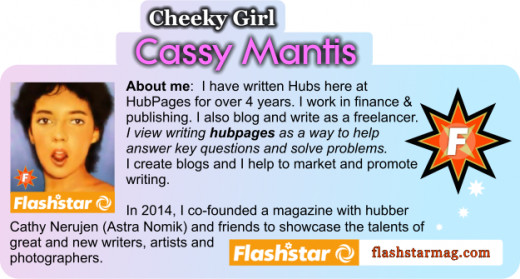

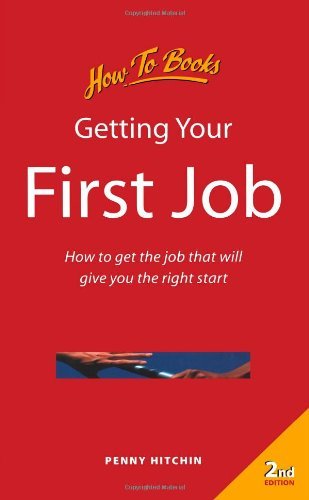

![Apache OpenOffice 4.0.1 [Open Source Download]](https://m.media-amazon.com/images/I/41XRri0F5fL._SL160_.jpg)






